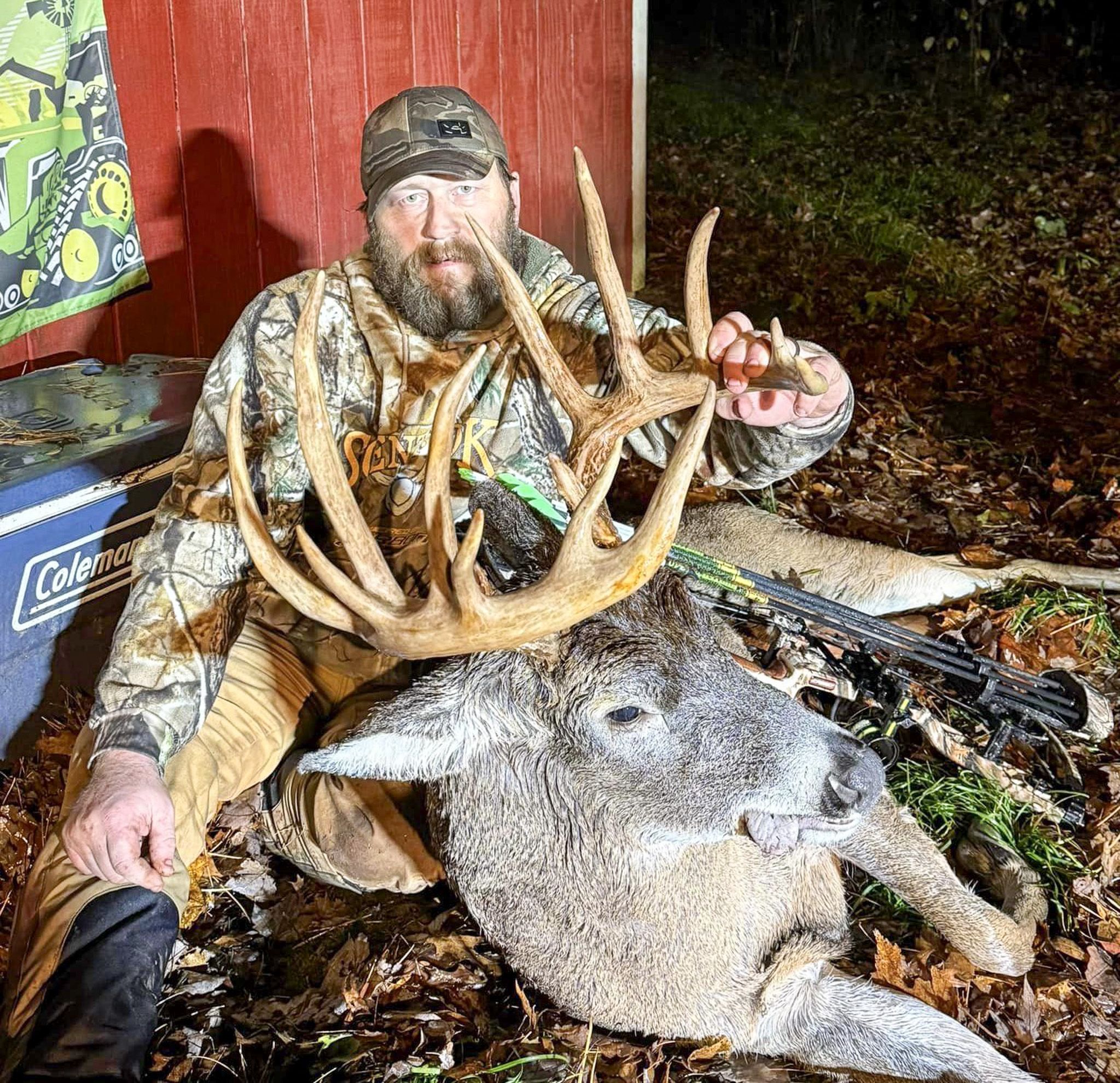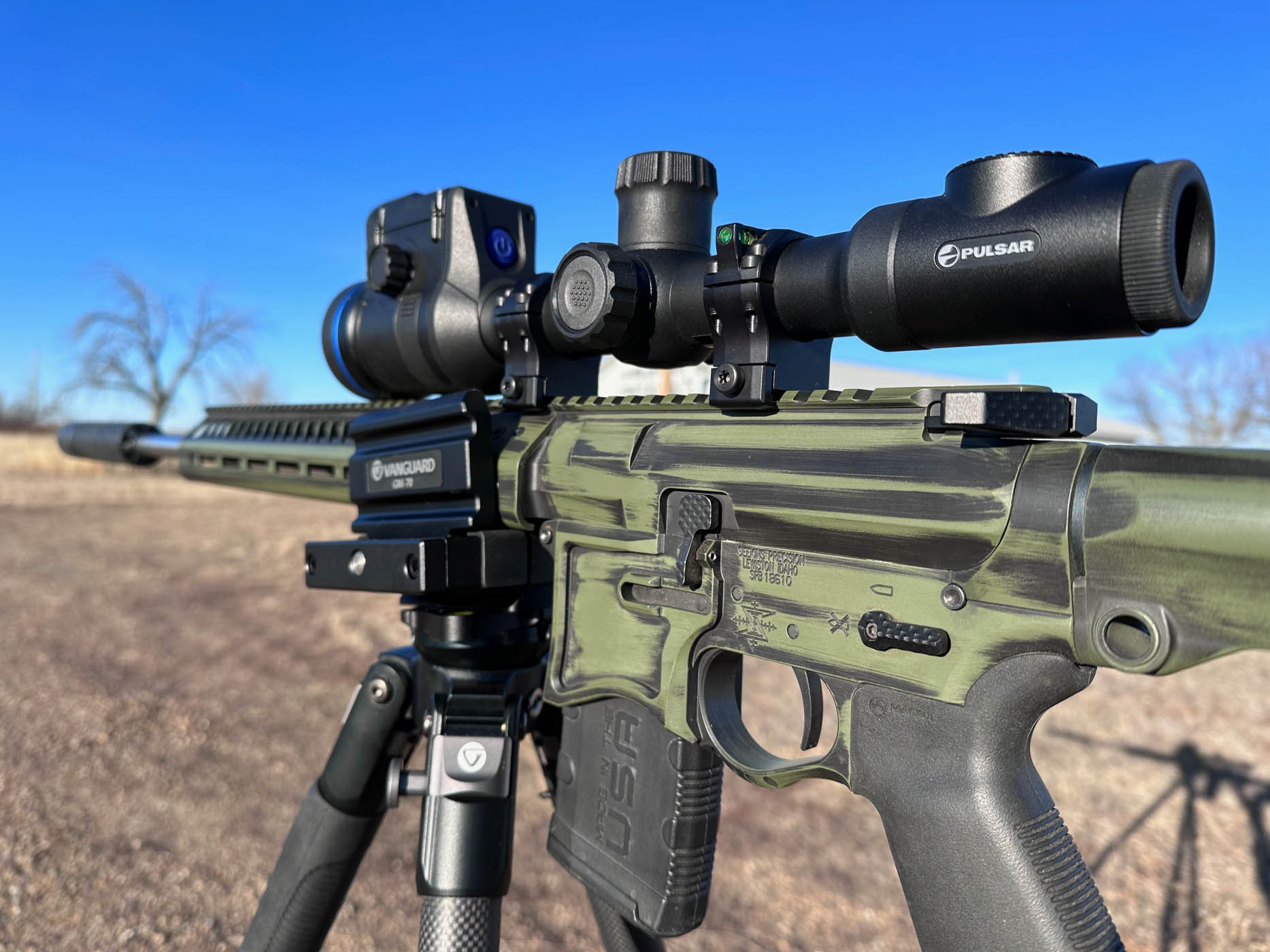The Bush Plane Engine Died Mid-Flight — and Other Close Calls While Flying the Alaskan Wilderness

Darkness loomed on the remote Alaskan tundra. Skies to the west were much darker than five hours prior.
It was comforting to finally hear the distant buzz of a bush plane’s engine that Pat, Tim, and I had been anxiously awaiting all afternoon. Earlier that day we checked in with the plane service in Kotzebue via satellite phone. A big storm was approaching and they were making efforts to get hunters in remote camps gathered up and flown back to safety in town. The storm was forecast to last nearly a week and several feet of snow and severe winds were expected.
They’d planned on picking us up in the middle of the afternoon. It was going to take two trips to haul us, our camping gear, a raft, a grizzly bear hide and meat back to town. We were less than halfway into a 10-day moose hunt. Pat was a resident and had filled the only tag of the trip with a nice tundra grizzly on the first afternoon. That berry-fed bruin was plump and it’s backstraps had been delicious, cooked over an open fire.
But it was nearly 7:00 p.m. above the Arctic circle when we heard the plane approaching. We were losing daylight, fast. Pat, Tim and I knew there wouldn’t be time to make two trips before darkness closed in. As we pondered what to do, we saw another plane approaching — sending two planes in dwindling light was a smart move by the bush plane service. Now we could all get out of there with our gear.
I had spent enough time in Alaska to know that a hurried trip before a storm could mean trouble, but honestly, any bush plane flight through Alaska brings a certain amount of risk. If you travel through remote Alaskan wilderness often enough, bush plane mishaps will happen to you. You just hope to come out on the winning end. I’ve been on hundreds of bush planes over the decades, and while most are safe and enjoyable, it only takes one bad experience to lose a life. This fact always looms. Always. Too many friends and people I’ve met have incurred enough devastation to think otherwise.
As the Cessna 180 circled for a landing, I was taken aback by how easily it was tossed around. The winds were obviously much more intense up high than where we stood on the river’s gravel. As the Cessna came closer, landing gear 50-feet from touching down, a wind gust rocked it, nearly slamming it to the ground. Powering out of it, the pilot was able to recover, clear a tall stand of alders and bank around for another landing attempt.
This time the pilot approached at a faster speed, quickly dropping in the final seconds to try and stick the landing. Right at the time of impact a wind shear again caught the plane, this time from directly above. The shot of wind pushed the wings down, slamming the plane hard onto the rocks. Somehow, the pilot was able to keep the nose up and control the landing. I was impressed that the landing gear didn’t break and the wing struts held strong. The big, soft tundra tires obviously helped absorb some of the shock.
The 206 landed more smoothly behind the 180. Things were looking good.
We were still more than 100 miles north of Kotzebue. We figured we might get dropped somewhere outside the scope of the storm, which would give us time to get two or three more days of moose hunting in.
Not My First Rodeo
Having lived in the Alaskan high Arctic for most of the 1990s, and after traveling much of the state numerous times over the past 34 years, I knew how dangerous Arctic storms could be, especially when flying is involved.
My wife, Tiffany, and I were school teachers in two remote Arctic villages in the 1990s where we lived a semi-subsistence life. Point Lay is an Inupiat village situated on the northwest Arctic coast, between Barrow and Point Hope with fewer than 100 residents when we lived there. Being on the coast, it was common to not see bush planes for two weeks or more due to severe storms.
The other village we called home for four years was Anaktuvuk Pass, also situated on the North Slope. While Point Lay was flat, Anaktuvuk Pass was nestled into the northern Brooks Range and surrounded by towering peaks that turn south into Canada and become the Rocky Mountains in the Lower 48.
I coached cross country, basketball, and volleyball in both villages and all our travel was done by bush plane. None of the remote villages have roads leading to them, so air travel is the only means of getting in and out.
When returning to Point Lay from a volleyball tournament in Point Hope one spring, the autopilot stuck. The pilot couldn’t regain full control of the plane. This meant the plane would go into a nosedive, then the pilot would regain partial control. Then it would go almost vertical, and the pilot again would struggle for control before the engine bottomed out. This went on for several minutes. Had it not been for seat seatbelts, bodies would have been tossed about inside the plane. Most of the kids threw up. They were crying and in fear. We all thought it was the end. Fortunately the pilot regained control of the Navajo and kept control until we landed safely.
I coached both boys and girls basketball in Anaktuvuk Pass and one season the girls played for the state championship. They were tough — the most dedicated kids I’d ever coached. Our travel budget was astronomical and we flew to several weekend tournaments over the winter season. During one stint we were gone for three weeks because severe weather prevented us from leaving the villages we were in, or from landing at home. We balled on Friday, Saturday, and Sunday, and I taught classes in the host school’s library Monday through Thursday. Fortunately, I was also the high school teacher.
In remote Alaska, the weather makes the rules. Defy them and you might pay the price.
One time when the boy’s team was returning to Anaktuvuk Pass, we got caught in high winds. Oddly, it was still smooth flying. We couldn’t feel the turbulence. But our fuel level was quickly running low and the pilot was forced to drop in elevation in order to get out of the wind and make headway. It was nearly dark and more than once the imposing mountain peaks appeared mere yards from our wing tips.
Another time our plane left Fairbanks, made one stop at a mining camp to drop off tools, then headed to Anaktuvuk Pass. The afternoon was clear and calm … until we hit the northern Brooks Range, not far from the village. The clouds were thick and unmoving in the stagnant air. A few peaks poked above the dense cover but I didn’t recognize them.
I was sitting in the copilot seat. We circled and flew up and down valleys but couldn’t see the village or any land. The pilot didn’t trust his primitive radar at the time, not amid the confined peaks. “Listen closely,” he said on the headphones. “We’ve circled the area so much, I don’t have enough fuel to get us back to Fairbanks or even the nearest landing strip. I need you to look closely through any holes in the clouds and see if you can recognize any landmarks below. If you do, tell me and we’ll shoot through it. We have about 30 minutes of fuel left.”
Ten minutes into the search there was a hole in the clouds about the size of a football field. I didn’t recognize the tundra below. The pilot circled back over it, lower this time. That’s when I saw an argo trail with snow in the tracks. I’d hunted Dall sheep off this trail and knew exactly where we were. I confidently relayed this to the pilot.
“How much room do you think we’ll have once we get below the ceiling,” he asked. “Facing north, you’ll have mountains 50 yards to the east, right on the edge of the trail…keep left!” I said. “The west side is wide open, all the way to the village.”
Instantly the pilot put the plane into a tight spin. I’d never been in a bush plane that had lost elevation so fast, so abruptly, and at such a steep angle. Then G forces in the little plane caught me off guard. Spiraling down through the seemingly tiny hole in the dense clouds, the ceiling was less than 200 feet. But the pilot nailed it and we skimmed the bottom of the clouds all the way to the village. I was petrified. The girls, all of whom were born and raised in Anaktuvuk Pass, didn’t bat an eye.
“That happens all the time,” shared one girl. “It’s just part of living up here.” They didn’t understand the severity of the moment. Before we moved to Anaktuvuk Pass and after we’d left, there were two devastating plane crashes in the Brooks Range. It can happen anywhere, any time.
Getting Out
As Pat, Tim, the pilots and I quickly loaded the bush planes with all our gear, we thought nothing of the hard landing the Cessna had encountered. We just wanted to get airborne before it was too dark.
I climbed into the co-pilot seat of the 180, while Pat crammed into the back. Much of our gear and Tim were piled into the 206.
With both planes loaded it was time to take off. While our Cessna slowly taxied to one end of the gravel bar, Tim and the 206 pilot finished tossing some big rocks out of the way on the far end of the crude runway, which went all the way to water’s edge. Right then I knew something wasn’t right. Those rocks should have been beyond the 180’s reach upon takeoff. Needing to extend the end of a runway by mere feet is rarely a good sign.
Punching the throttle, the Cessna struggled to gain power. It was so weak, the pilot aborted the takeoff attempt halfway through. This was not good.
“Don’t worry,” Pat said when I turned back to check his reaction. “I’ve been flying with this guy for 15 years and he’s the best of the best!” That’s all I needed to hear, or so I thought.
I’m not a pilot but I’ve flown enough to recognize engine sounds. I know when gauges aren’t properly registering, and worse yet, when pilots are nervous.
“I don’t know what’s wrong,” the pilot shouted to me as he turned the plane around, heading back up the gravel bar to attempt another takeoff. He revved the engine. It got louder but didn’t gain enough power.
The pilot hopped out, inspected the engine along with the 206 pilot, then climbed back in. “Everything looks alright,” he shrugged. “Hang on, we’ll try it again.”
The gauges worked and there was no smoke or off-putting smells. The pilot gunned it one more time and again, lacked the usual power. “Hang on, we might catch the tops of those alders at the end!” He ordered.
Speed was slow to build and the power was weak. But this time we were fully committed; either the plane was going to get airborne or we were going to end up in the river.
Only feet from the end of the gravel bar, the plane slowly caught air. The climb was painstakingly gradual and dangerously slow. We barely nipped the tops of the alders. The pilot didn’t say a word. Neither did I. The moment he banked left instead of right, I knew something was very wrong.
We should have banked right, heading straight south toward town. Instead, we turned left, heading north, then followed the Wulik River downstream to the southwest. Slowly we gained elevation, the pilot pushing and pulling levers, checking and double-checking gauges.
Seven minutes into the flight we leveled out at 300 feet. “I’m not going any higher and we’re following the river as far as we can in case I have to put this thing down,” hollered the pilot. The river was winding, its level very low. It was a smart move. If something were to go awry and he needed to land the plane, there was enough exposed gravel bars for us to land on.
Just as things seemed manageable, the engine sputtered. The gauges shorted out, needless popping up and down. Power suddenly waned. The pilot aggressively moved levers, flicked switches, punched buttons and pumped a handle between our seats. We were losing elevation but the pilot was able to regain power and level out.
Cruising at 100 feet, the pilot positioned the plane directly over the river, sticking to every twist and turn. It was nearly dark. The 206 was somewhere behind us. We didn’t have radio contact with them.
The gauges on the dash were working again, and though the ride was smooth, there was clearly a lack of power. No words were exchanged, and none were necessary. Pat and I had flown enough that we knew the situation was out of our hands. All we could do was pray and allow the pilot to do his job. He was a grizzled man, just what you’d want in this situation. Having spent more than half his life doing what he loves, we had the utmost confidence in him.
Smoothly we cruised. Hands sweating, heart pounding, I attempted taking in the beauty from above. But no matter how hard I tried to take my mind off the plane problems, it was impossible. Thinking of my wife and two sons back home, I was glad they weren’t with me.
All of a sudden there was a loud pop and a blaze of fire shot past my window as the cowling pulsed under pressure. We instantly lost power. The gauges on the dashboard flatlined and the lights went black. It was dark and silent inside the cabin. A peaceful, tranquil feeling washed over me. The calmness of the moment caught me off guard. My senses of sight and smell escalated to a level I’d rarely known. “Is this what it feels like to die?” I thought.
Quickly the pilot banked the plane into the wind, heading back upstream. We were losing elevation, fast.
At the last moment the pilot regained enough sputtering power to keep the plane level. There was one little gravel bar in front of us and he was able to miraculously hit it. Upon touchdown we lost power and never regained it.
The 206 passed overhead and saw we were forced to make an emergency landing. He was able to land nearby. We packed all the gear we could into the dead 180, putting the raft, tent and some bulky camping gear beneath it, hoping grizzlies didn’t find it. Then we piled into the 206 and headed for Kotzebue.
The alternative would have been to pitch camp, but with one plane down, a storm approaching and windchills already taking the temperature well below zero on this late September day, that seemed like a foolish idea. Flying over the tundra, lights flickering from distant villages, things were finally good.
Read Next: A Caribou Hunting Adventure in Alaska, No Guides Required
Fortunately the storm swung to the north and the next morning a mechanic was sent to fix the broken-down plane and return our gear. What he discovered was a blown engine on the 1950s Cessna, ringing home the fact we were fortunate to walk away from what could have easily been a catastrophe. The plane would have to be airlifted back to town by helicopter in order to be repaired. The majority of our gear remained with the plane.
We spent the next few days at Pat’s home in Kotzebue. Our moose season was over.
Three days later the skies cleared. We heard a helicopter thundering into town and stepped out to see what we presumed would be our plane being towed. From a distance we could see it was towing a bush plane, but as it neared, it clearly wasn’t ours.
As the chopper got closer we could see it was hauling a totaled bush plane. One wing was missing. The plane being hauled in by search-and-rescue came from the same area we had hunted. It had crashed when the pilot attempted to land on a gravel bar in high winds. The last we heard, both the pilot and passenger of the plane had been airlifted to Anchorage and were in critical condition. I never got the final details on if they survived.
Later, our plane was hauled in by the same rescue helicopter. Reflecting on what could have been — especially after having seen the demolished plane up close — made me realize how fortunate we were to walk away, and how valuable experienced bush plane pilots truly are.
During my years of traveling and hunting throughout Alaska, I’ve always said the success of a hunt is measured on whether or not you come out alive, not if you filled a tag.
Editor’s Note: For personally signed copies of Scott Haugen’s best selling book, Hunting The Alaskan High Arctic, visit scotthaugen.com
Read the full article here







